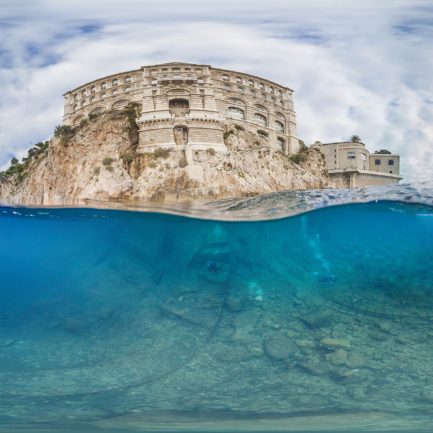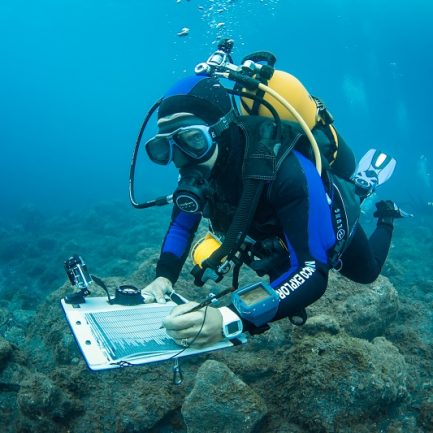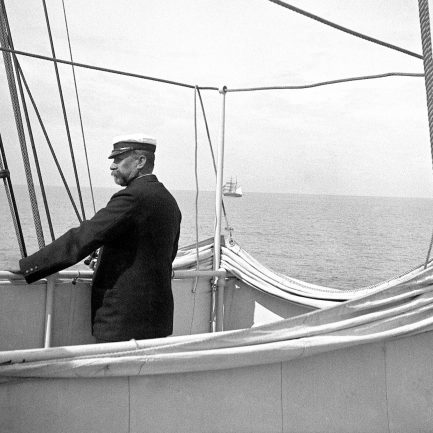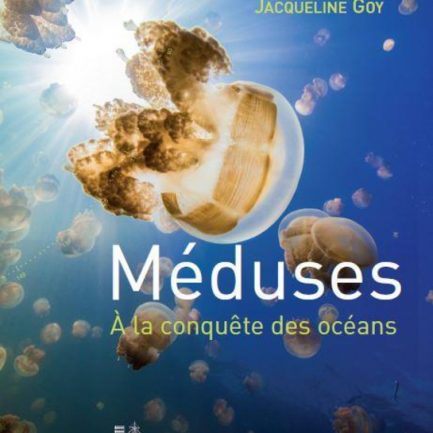Jellyfish and man
Dreaded since antiquity, jellyfish have only been studied by scientists since the 20th century. Today, we are discovering their capacity for adaptation and regeneration. This gelatinous animal is a gold mine for medical and biochemical research, which hopes to use their particularities to heal. But jellyfish are proliferating, perhaps to the point of changing biotopes, and seem to be taking advantage of declining fish stocks. Let’s take stock with Jacqueline Goy, author of this scientific fact sheet.
Are we right to fear jellyfish?
In ancient times, the nuisance caused by jellyfish prompted Aristotle to give them the name “cnid” (Greek for “stinging”) and, as a tribute, scientists created the group of cnidarians to designate all animals with this function.
Jellyfish stings are not all of the same severity and, on our coasts, they can cause simple itching or deep ulceration. This is precisely what the sailors felt when sorting out trawl bags filled with physalies during the Prince Albert I of Monaco’s campaigns off the Azores. The physalies are not jellyfish but siphonophores whose long tentacles recover the preys by paralyzing them thanks to their toxins. Studied by two scientists, Charles Richet and Paul Portier, whom the Prince took on board, and tested on animals, the toxin had an effect on the heart and lungs, more violent on second contact. Both scholars called this reaction anaphylaxis, the opposite of phylaxis or protection. This is the height of allergies. Charles Richet was awarded the Nobel Prize in Medicine and Physiology in 1913.
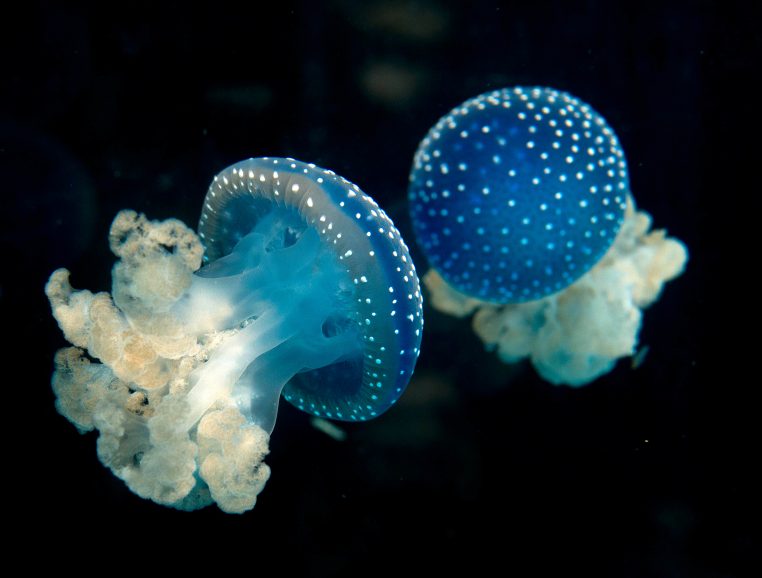
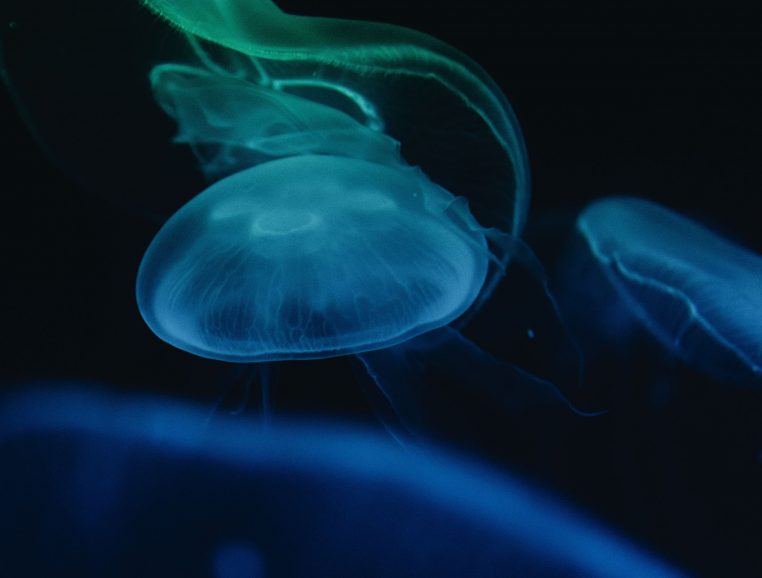
Will we end up eating jellyfish instead of fish?
Overfishing leaves food available that is not consumed by fish, and jellyfish take advantage of this, which encourages their growth. The increase in water temperature can accelerate the reproduction of jellyfish, and the young are not likely to suffer from starvation in this favourable trophic environment. This general gelling of the oceans due to human activity is a dangerous deviation for the economy of the seas because jellyfish are not very valuable as food. Eating them – drinking them would be more accurate because of the 96% water content – does not constitute an energy meal.
Not so different from humans?
Jellyfish have eyes distributed along the edge of the umbrella: simple pigmented spots or with a cornea, a lens and a retina with a bipolar pigment layer. This is the first outline of cephalization, the study of which gives interesting perspectives for healing in cases of retinal degeneration. Another surprise after the mad cow disease which directed the research of collagen towards other animals than bovines, is the discovery of a collagen of human type in jellyfish. It is used as a fake skin for burn victims, as a culture medium in cytology and is an effective anti-wrinkle in cosmetology.
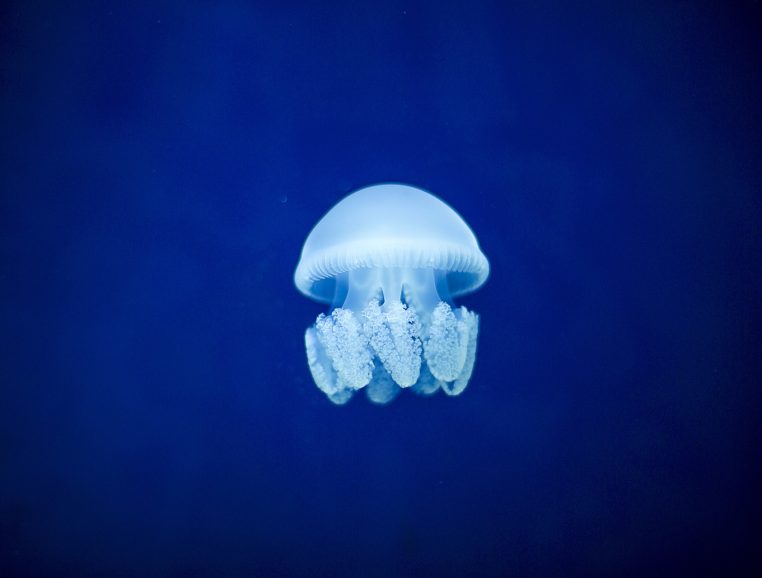
See also
Getting involved to save sharks
2013, the Sharks program of the Oceanographic Institute
Awareness-raising operations, dedicated exhibitions at the Oceanographic Museum, events for all, international scientific meetings: shark conservation is a major issue for the Oceanographic Institute. Through its major action programme “Sharks”, initiated in 2013, the Institute invites you to meet these lords of the seas, as fascinating as they are unknown, and advocates for a balanced management of the cohabitation issue that we face…
Sharks, which are essential for balance in the oceans, are under threat
Sharks are the keystone of marine ecosystems, ensuring their balance and vitality. If sharks were to become extinct or scarce, ecosystems would be disrupted, with a cascade of threats to many other species. After 400 million years of dominating the oceans, shark populations have declined by 80-99% in the last 50 years. To avoid this catastrophe, the Oceanographic Institute is seeking to promote peaceful cohabitation between humans and sharks, even in the rare cases where sharks pose a risk to humans.
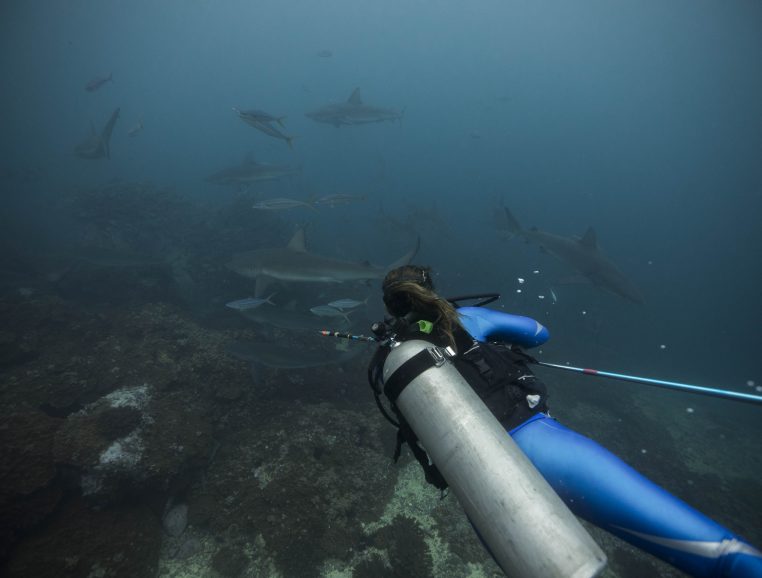
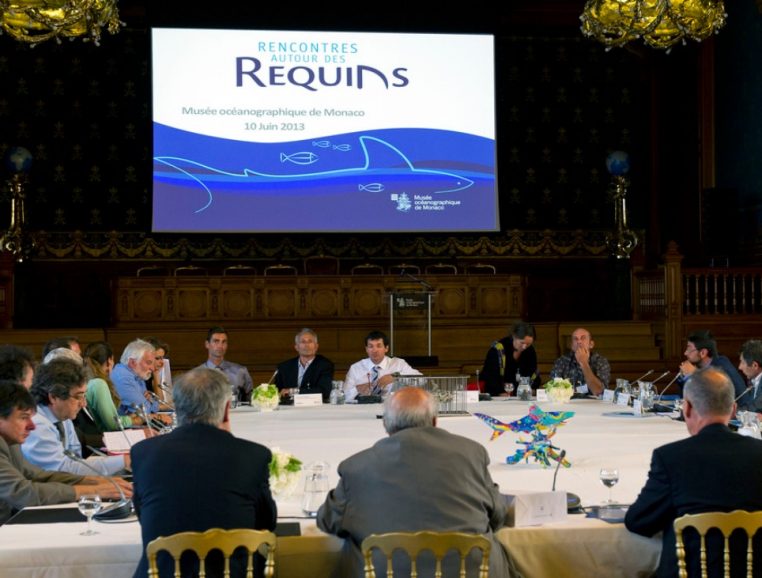
Discussion workshops for protecting sharks
Together with its partners, the Oceanographic Institute regularly organizes high-level workshops. This was the case, for example, in 2013 during the two exchanges between international experts on the cohabitation between humans and sharks. These exchanges allow us to progress in the knowledge and protection of sharks and human activities, especially when there is a risk of accident: these meetings have led to the creation of a single document to date: the “shark risk toolbox”.
What is the “Monaco Blue Initiative”?
Launched in 2010 by H.S.H. Prince Albert II of Monaco, the Monaco Blue Initiative is a discussion platform co-organised by the Oceanographic Institute – Albert I, Prince of Monaco Foundation and the Prince Albert II of Monaco Foundation. It brings its members together once a year to address current and future global challenges in ocean management and conservation. This event provides a stimulating environment to encourage exchanges between companies, scientists and decision-makers, to analyse and promote possible synergies between the protection of the marine environment and socio-economic development.
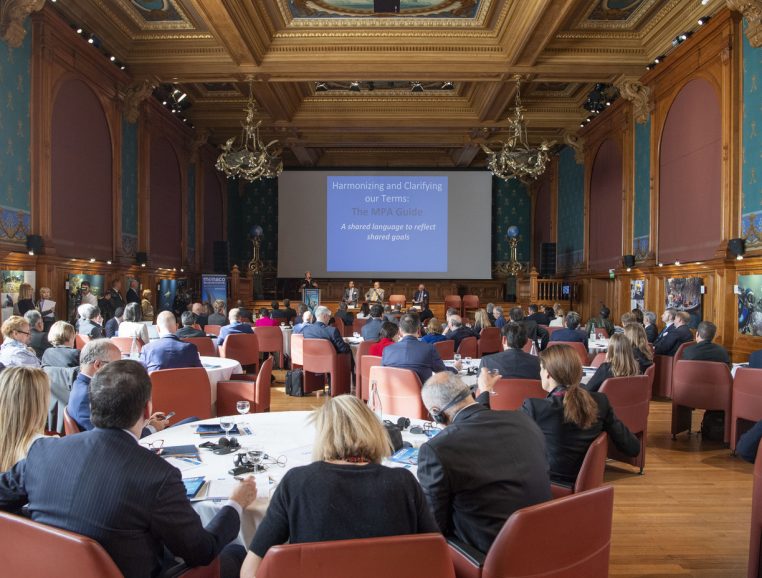
See also
Men or sharks: who have the biggest jaws in the sea?
Symbol of a wild and rebellious nature, the shark represents the limit of our domination of the seas, a frontier that some people are determined to push back to the abyss. In this 2013 op-ed, Robert Calcagno questions the relationship between humans and sharks.
Opinion column by Robert Calcagno, Director General of the Oceanographic Institute, Fondation Albert I, Prince of Monacopublished in the Huffington Post on January 22, 2013.
A matter of reputation
In our Western culture, sharks have always been given the most detestable labels. They have the unenviable status of scapegoats and have been blamed for all the difficulties encountered by man in his conquest of the marine environment. Legend has it that they devoured shipwrecked sailors when the first boats headed out to sea, ate airplane pilots when the first paddleboats were found at sea, and were even disloyal competitors of fishermen when the catch proved insufficient.
No accusation was spared them, not even that of manhunters. Since the film “Jaws” (1975), it seems to be accepted that sharks have been stalking swimmers, surfers and windsurfers right up to the edge of the beach. When an accident occurs, it doesn’t take much for the man, in an outpouring of hatred, to demand justice.
What marine animal today can claim to match the media coverage of the shark or enjoy such a loathsome reputation? At no time, however, does the man question himself. He never establishes a correlation between the increase in the number of attacks and the boom in boating activities, which considerably increases the probability of an encounter between man and beast. For of the two, which is the one who invades the other’s territory?
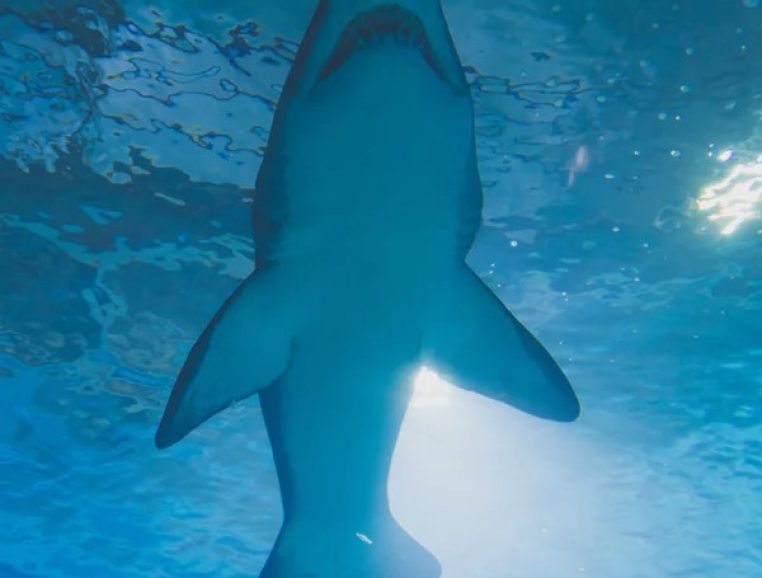
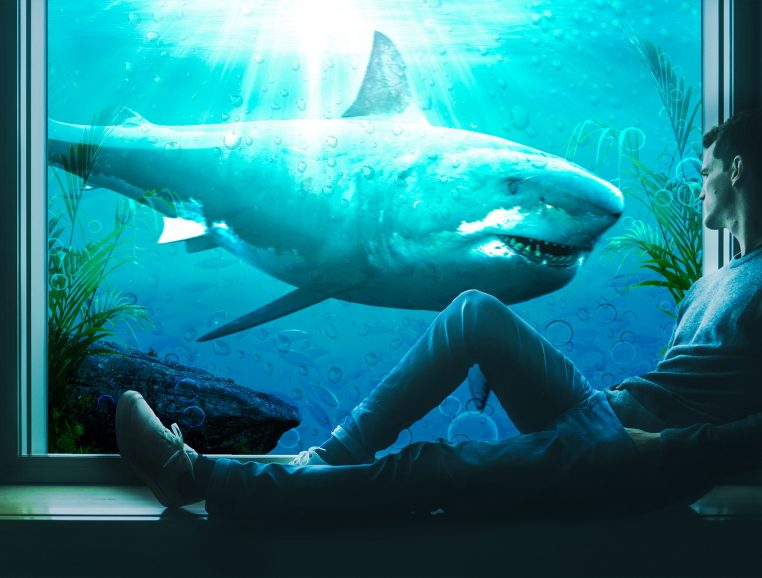
The danger is elsewhere
Symbol of a rebellious nature, the shark represents the limit of our domination of the seas, a frontier that some people are determined to push back to the abyss. While the oceans are today appreciated as one of the last spaces of freedom, claimed by water sports and underwater enthusiasts, man seeks to introduce control and mastery. What sense would there be in a freedom that is exercised in a polite and sanitized world?
To focus on the domination of nature in this way is to ignore the origin of the danger, for it comes much more from within those lands that we think we control. While sharks kill less than a dozen people a year worldwide, collapsing sand tunnels in the United States alone cause that many deaths. In France, nearly 500 people die every summer from accidental drowning, including more than 50 in swimming pools. Not to mention the incomparably higher risk of accidents on the beach road! How would the total eradication of sharks have a positive effect on these statistics?
Since their appearance nearly 400 million years ago, sharks have escaped all extinction crises, surviving, for example, the dinosaurs. Today, however, man is making a rare effort to make them disappear. Specifically fished, most often for their fins, or caught in the great trap of global overfishing, more than 50 million of them disappear each year. Most known shark stocks have declined by 80-99% since industrial fishing began in the mid-20th century. With no qualms about it, or even with the satisfaction of getting rid of competitors or annoyances, man is reducing the oceans to vast pools.
Accepting a wild sea
Some island cultures could have enlightened us. Nurturing a completely different relationship with the sea, they respect sharks as the embodiment of a nature that gives and receives, that feeds and kills, without any malice and sometimes even with foresight, weighing souls to select victims and miracles.
The West, for its part, preferred to break the harmony and opt for confrontation. We are not aware that sharks play a key role in maintaining the balance and vitality of marine ecosystems by controlling the lower levels of the food pyramid and selecting weakened prey. Locally, the disappearance of sharks has already led to significant upheavals: an increase in the number of rays, which have wiped out the century-old scallop beds on the northeast coast of the United States, and the development of octopuses, which have feasted on New Zealand lobsters. On a large scale, the intensive traffic in these animals is leading us headlong into the unknown. We are certainly moving towards absolute domination, but domination over impoverished and barren oceans.
Our indiscriminate fight against the sharks is a testament to the poor life lessons learned so far. By wishing to push back the limits of the natural environment and the last great wild animals, we refuse any cohabitation which would not be based on domination. Accepting nature means accepting that some spaces escape our rules and requirements. Beyond questioning ourselves about the oceans, let’s question ourselves about the people we want to be…
Is it not urgent to show altruism by demonstrating that our freedom can also stop in front of that of other species which, good or bad, useful or useless, have for first characteristic to share our blue planet? It is at the price of this change of philosophical posture that humanity will be able to find balance and serenity.
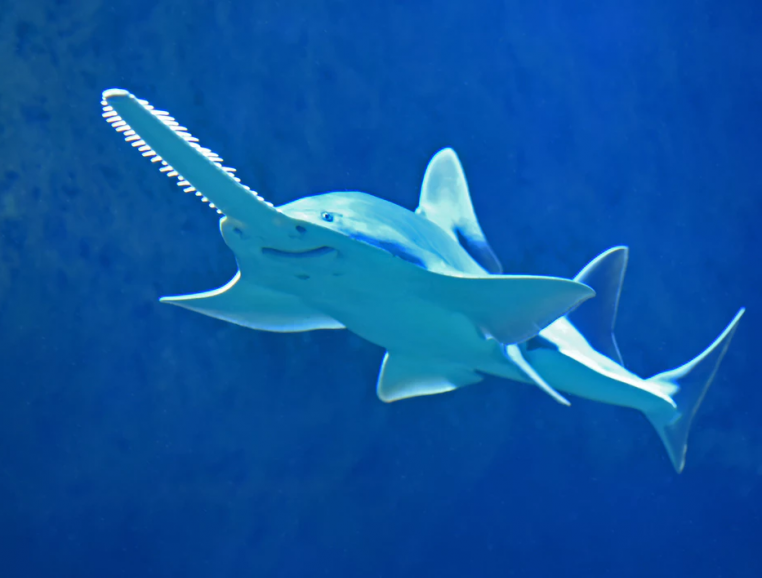
See also
Working together to create the first generation of large marine parks in the world
Under two percent of the ocean is currently “strongly protected”. In 2006, to make up for this shortfall, the Pew Charitable Trusts and several other partners launched the Global Ocean Legacy project. The aim of this project is to contribute to creating large-scale marine reserves, as set out in the scientific sheet drawn up by Global Legacy – Pew below.
The ocean, which is essential for life, is under greater and greater threat
The ocean plays an essential role in maintaining life on our planet. It covers almost three quarters of the globe and hosts around a quarter of all identified species in the world, not to mention plenty others we have yet to discover. The ocean ensures the survival of billions of people and a multitude of species of wildlife.
Human activity, however, is posing an ever-increasingly serious threat to its health. In this context, large and strongly protected marine reserves are becoming crucial with regard to protecting the marine environment. Within these reserves, fishing and all other extraction activities are prohibited to ensure that the oceans are properly preserved.

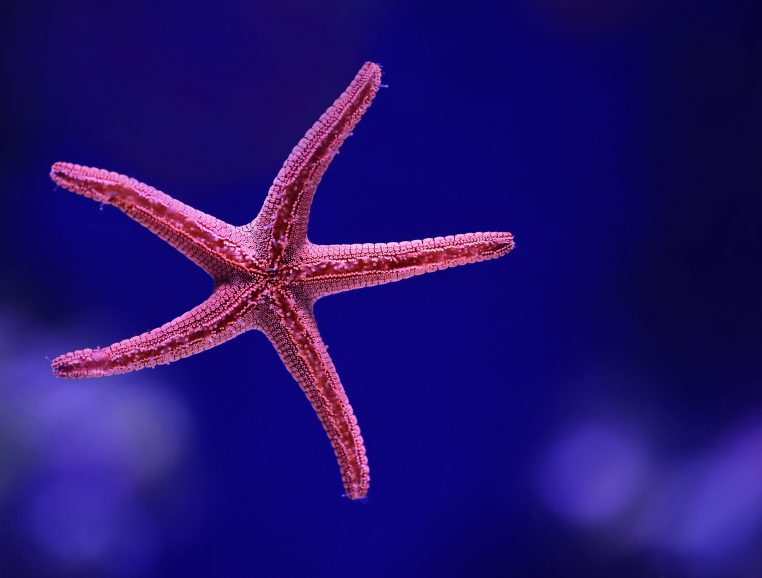
An association of world leaders sharing the same vision
Global Ocean Legacy collaborates with communities, governments and scientists from around the world to save some of the most important and well-preserved ocean environments.
Global Ocean Legacy is a partnership of philanthropic leaders who share a common vision: protecting the ocean for future generations by creating 15 large marine parks – all of which cover at least 200,000 square kilometres – by 2022. The partners of Global Ocean Legacy are Bloomberg Philanthropies, Lyda Hill Foundation, Oak Foundation, The Pew Charitable Trusts, Robertson Foundation et Tiffany & Co Foundation.
Large and strongly protected marine areas, essential for conservation
Studies have shown that large and strongly protected marine reserves are crucial in terms of restoring the abundance and diversity of species and protecting the general condition of the marine environment. However, under 2.5% of the ocean is strongly protected, as against 1.5% of dry land.
In the US, the creation of Yellowstone National Park in 1872 was not just about protecting one of the most spectacular landscapes in the country; it also marked the beginning of a new way of thinking about protecting nature.
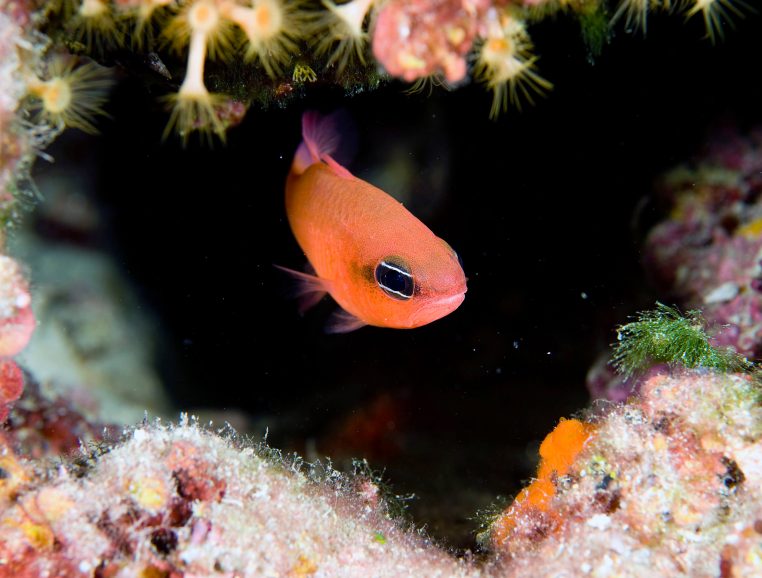
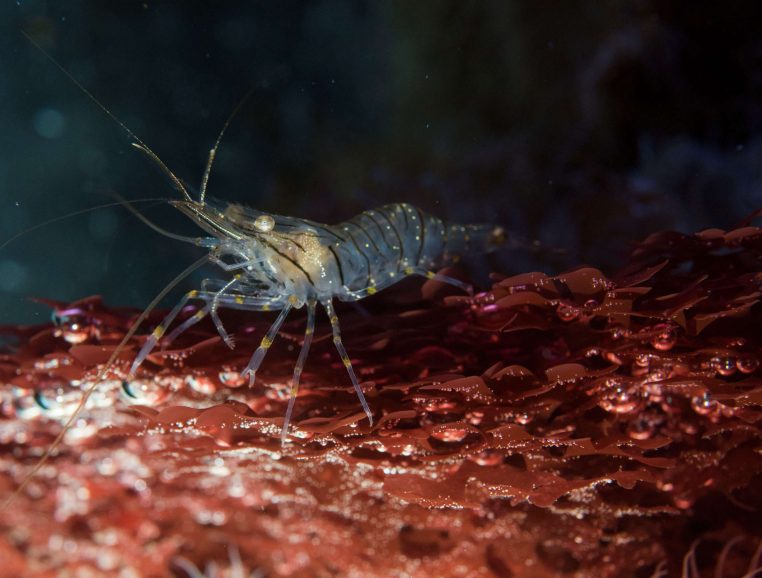
Satellite surveillance to ensure the boundaries of the reserves are respected
It can be difficult to monitor marine reserves and ensure they are respected in the remotest areas of the world, even though most of the last virtually untouched parts of the ocean are found there.
To overcome this difficulty, Pew joined forces with Satellite Applications Catapult, a British government initiative, to launch the Eyes on the Sea project and its virtual surveillance centre. This innovative system allows government agents and other analysts to identify and monitor illegal activities at sea, particularly illegal, undeclared and unregulated fishing, also known as pirate fishing.
See also
The multiple benefits of strongly protected large marine areas
Strongly protected large marine areas are essential for the protection of zones of the ocean against destructive human activities. They also contribute towards preserving species, habitats and the functional diversity of ecosystems. Unfortunately, there are still far too few of them. This scientific sheet from Global Ocean Legacy – Pew examines the issue.
The stresses suffered by marine ecosystems
The intensification of man’s impact on the ocean is resulting in the disappearance of the essential advantages offered by this ecosystem. Currents bring millions of tonnes of plastic and other waste from the coast to the open sea, where this waste harms marine life and changes how the ecosystems operate.
The increase in levels of carbon dioxide in the atmosphere has several consequences, including a rise in temperature and the ever-increasingly pronounced acidification of the ocean, which exacerbates further the stresses suffered by marine ecosystems. Fishing is also suffering from this situation.

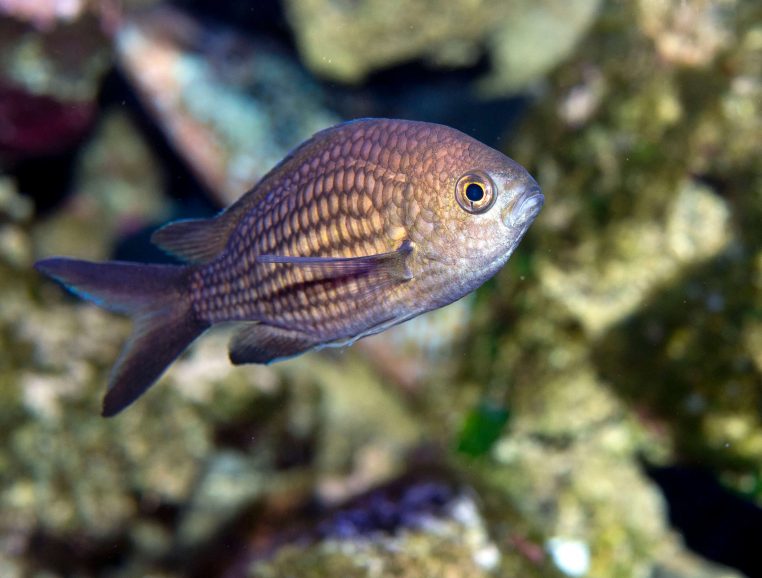
PMAs are essential for the health of the ocean
Large, highly protected marine reserves are an essential tool for addressing several issues that affect the health of the ocean. These reserves protect zones of the ocean against human activities, such as industrial fishing, the extraction of natural resources and any other destructive use.
They also help preserve species, habitats and the functional diversity of ecosystems. Yet to date, only about 2% of the world’s oceans have been designated as highly protected marine reserves. Prominent scientists highly recommend that at least 30% of the oceans be given this degree of protection.
Five essential characteristics for successful conservation
A 2014 study showed that human activity has a combined impact on ocean ecosystems and that marine reserves offer better advantages with regard to conservation when they are vast, strongly protected, isolated, perfectly respected and old.
The advantages are considerably greater when all five of these characteristics are met. For example, protected marine areas that have all these characteristics have 14 times as much shark biomass, twice as many large fish and 5 times more fish biomass in general than unprotected areas. In comparison, protected marine areas showing only one or two of these characteristics are not substantially different from exploited areas.
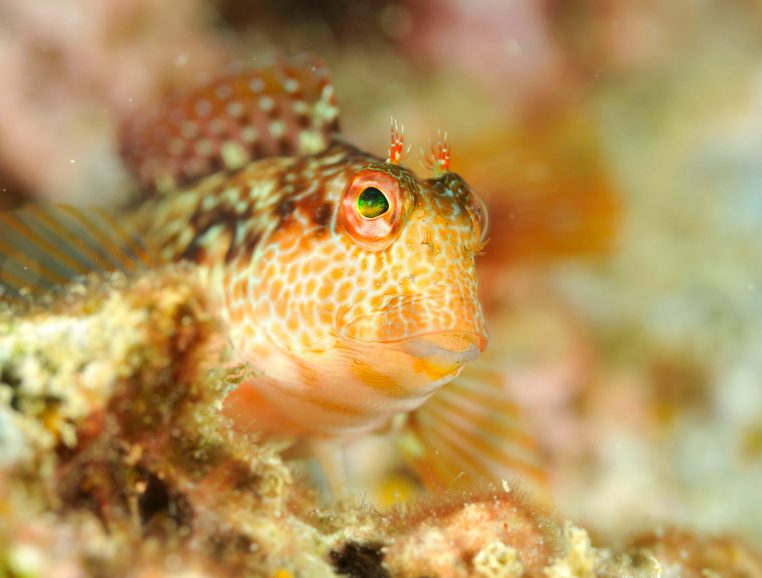
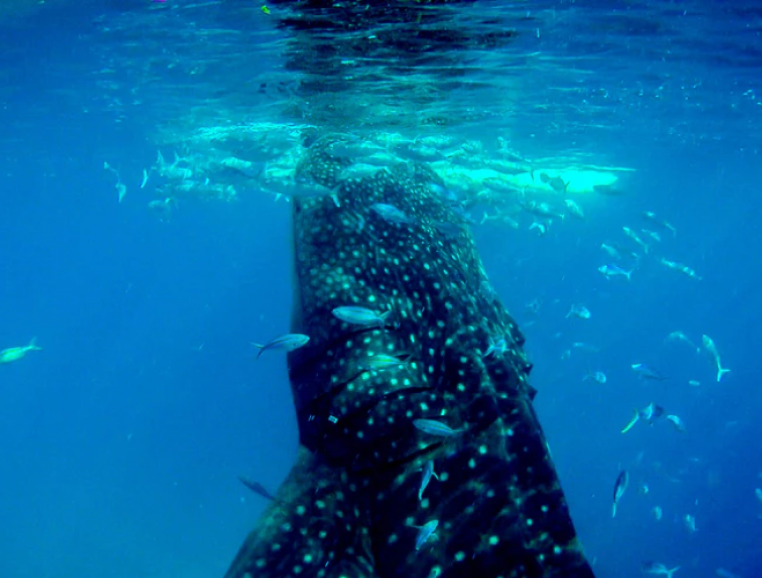
Economic benefits for the population
Marine reserves also benefit communities by supporting the local economy. Marine reserves promote the health and life of the ocean, attracting tourists and boosting local economies.
They also create more resilient coastlines by strengthening reefs. In addition, they preserve cultural heritage. For example, on Easter Island, in French Polynesia or in Palau, conservation is a cornerstone of the history and daily life of the community.
See also
Threats to the poles
What are the solutions for the Southern Ocean?
At a time when global warming and the acidification of the oceans are leaving no region untouched and when our appetite for natural resources is sharpening, how can we maintain one of the last remaining unspoilt treasures of the planet: the Southern Ocean? This question was the focus of a recent debate meeting at the Maison des Océans in Paris on Thursday 28 November 2013.
The Oceanographic Institute argues in favour of defending the Southern Ocean
The latest international negotiations show that an international consensus is not easy to achieve.
In 2013, the Commission for the Conservation of Antarctic Marine Living Resources (CCAMLR) failed for the third time since 2012 to meet its commitment to establish marine protected areas in the Southern Ocean. However, many States remain committed to strengthening the protection of the poles. A few months later, the Oceanographic Institute organized a meeting-debate at the Maison des Océans in Paris to help fill this gap.
Robert Calcagno, Director General of the Oceanographic Institute, believes that “it is now time to regain this momentum, which goes beyond today’s appetites, so as not to rob future generations of one of the last wild spaces on our blue planet”.
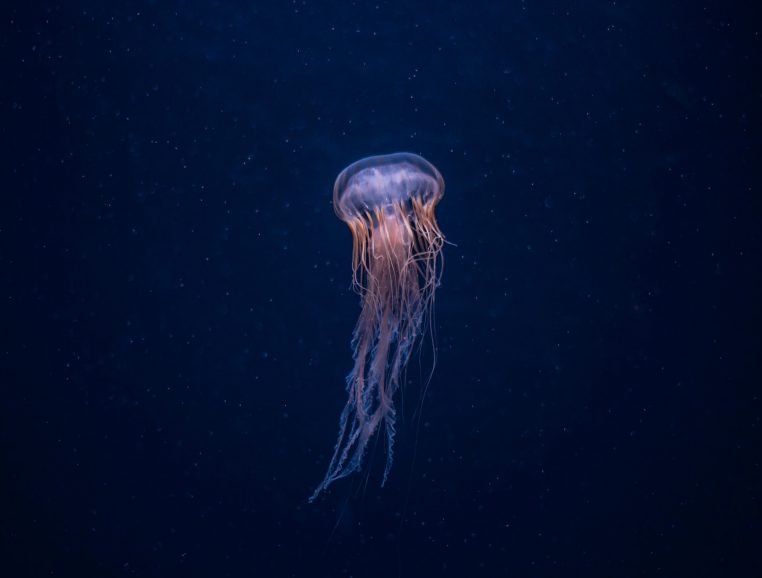
Essential questions defended by A-list names
Is this the end of this ocean, which has remained one of the wildest spaces on the planet, preserved from human excesses?
What is happening to the exceptional management model that has so far maintained the balance between fishing and ecosystem preservation?
These issues were the subject of much debate at this meeting organized by the Oceanographic Institute, with the participation of leading figures:
Michel Rocard, former Prime Minister and Ambassador of France in charge of international negotiations on the Arctic and Antarctic poles. He was able to give an outstanding account of the history and prospects of CCAMLR and the Antarctic Treaty System.
Robert Calcagno
Director General of the Oceanographic Institute. He moderated a round table discussion with the three French Southern Ocean experts who took part in the latest negotiations:
– Philippe Koubbi, researcher at the Pierre and Marie Curie University, French representative to the CCAMLR scientific committee,
– Olivier Guyonvarch, Deputy Director of the Law of the Sea, River Law and Poles at the Ministry of Foreign Affairs
– Stéphanie Belna, Head of the Polar and Marine Environment Mission at the Ministry of Ecology, Sustainable Development and Energy
WHY IS CREATING PMAS ESSENTIAL FOR THE SURVIVAL OF THE OCEANS?
The creation of large marine protected areas allows for better regulation of fisheries and other activities, but also for better monitoring of the effects of global change by protecting some areas from local damage.
Numerous studies have highlighted the multiple benefits of MPAs, and the need for them has been proven. “Reclaiming our common heritage and re-launching international commitment” are two essential actions that must be implemented quickly, pleads Robert Calcagno in an exceptional article written at the end of this meeting.
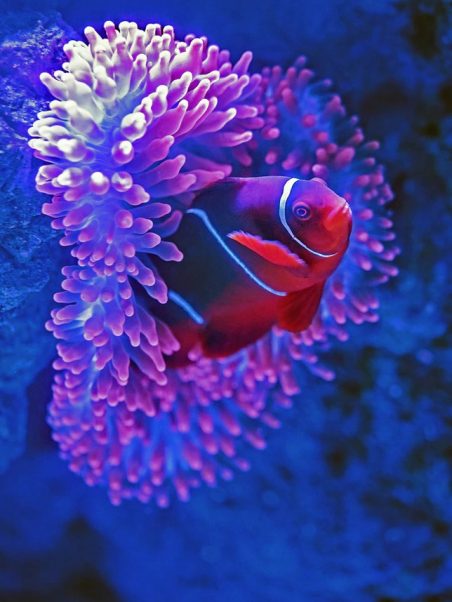
See also
What does the future hold for Antarctica?
The conference “Antarctica Today and Tomorrow” took place in Paris, France on 29 June 2017, hosted by the Oceanographic Institute of Monaco at the Maison des Océans. This gathering was organized on a specific date: the first anniversary of the death of Michel Rocard, a great defender of the poles. The event brought together 250 participants from all walks of life: governments, civil society, associations, etc. This symposium was organised with a specific aim: to create a new marine protected area in Antarctica.
The Antarctic and the Southern Ocean changing radically?
During the panel discussion “Antarctica and the Southern Ocean in a Changing Environment”, Thomas Stocker, Co-Chair of IPCC Working Group I, stated that 147 billion tons of freshwater are lost annually in Antarctica.
Françoise Gaill, Scientific Director, Ocean and Climate Platform, also mentioned abrupt changes in Antarctica, such as the decline of the emperor penguin population due to the disappearance of the ice cover.
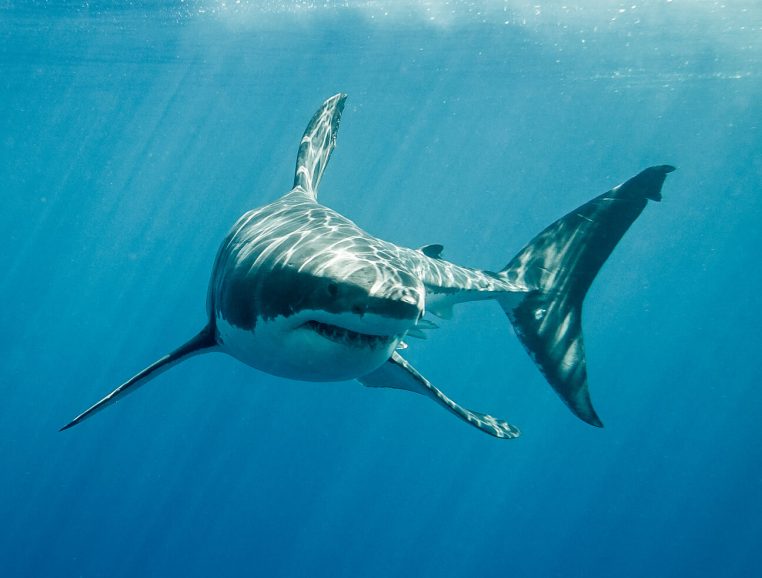
A major challenge: creating a new protected marine area
Organised by the Antarctic and Southern Ocean Coalition (ASOC) with the financial support of the Prince Albert II of Monaco Foundation, the Pew Charitable Trusts, and in partnership with the Oceanographic Institute of Monaco, the symposium was attended by around 250 people at the Maison des Océans in Paris.
Robert Calcagno, Director General of the Institute, explains that the conference aims to support and raise awareness of the proposal by Australia, France and EU partners to establish a new MPA in East Antarctica.
A panel discussion entitled “MPAs, Antarctica and the Southern Ocean” discussed the many benefits of establishing a new MPA.
THE ANTARCTIC TREATY: WHY IS IT A SUCCESS STORY?
In the morning, after an opening ceremony, the first round table entitled “Lessons learned from a successful Franco-Australian experience, thirty years later – From the Wellington Convention to the Madrid Protocol” was held.
The global response to the need for an international framework for Antarctic activities began with the adoption of the Antarctic Treaty, signed in Washington DC, USA, on 1 December 1959.
The main objective was to ensure that “in the interests of all mankind, the Antarctic will continue to be used exclusively for peaceful purposes and will not become the scene or object of international discord”.
On 4 October 1991, this treaty was supplemented by the Protocol on Environmental Protection, also known as the Madrid Protocol. Today, thanks to these multilateral agreements, Antarctica is a place of peace and scientific collaboration. This experience demonstrates the possibility of international agreement on such vital issues as environmental protection.
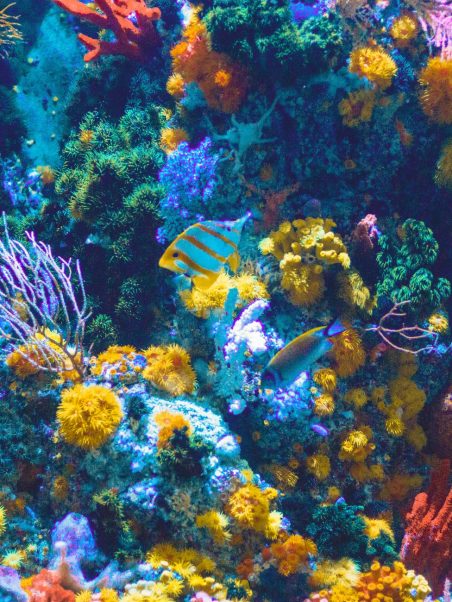
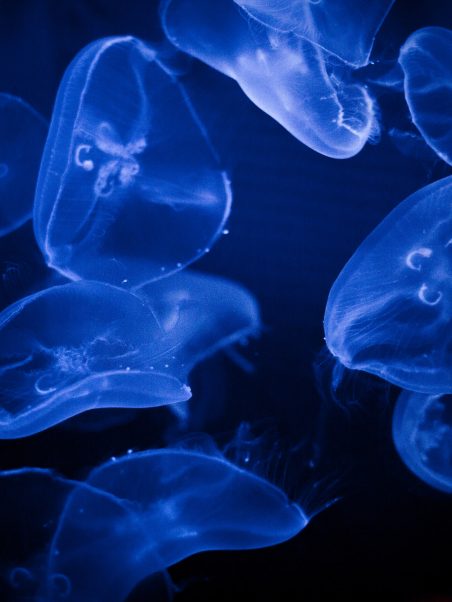
THE ROSS SEA, OR THE EMERGENCE OF THE LARGEST PMA
In October 2016, after several years of discussion, members of the Commission for the Conservation of Antarctic Marine Living Resources (CCRVMA) agreed to designate a 1.55 million km² area as a Ross Sea Marine Protected Area.
This MPA came into effect on December 1, 2017 and limits certain activities entirely, in order to achieve specific conservation goals. The Ross Sea Region MPA is the second of its kind to be adopted, and the largest to date.
In a video, Prince Albert II of Monaco welcomed the designation of the Ross Sea MPA and said it was “an incentive to go further”. He supported the establishment of a network of MPAs in Antarctica, stressing the importance of support from EU partners.
Find out more
The summary of the symposium “Antarctica, Today and Tomorrow”, published by the International Institute for Sustainable Development on Saturday 1 July 2017, is online at this
address
.
Find out the synthesis of the conference, published by the International Institute for Sustainable Development at this
address
.
The conference, entirely filmed, is also available on the
Youtube
of the Institute of Oceanography.








